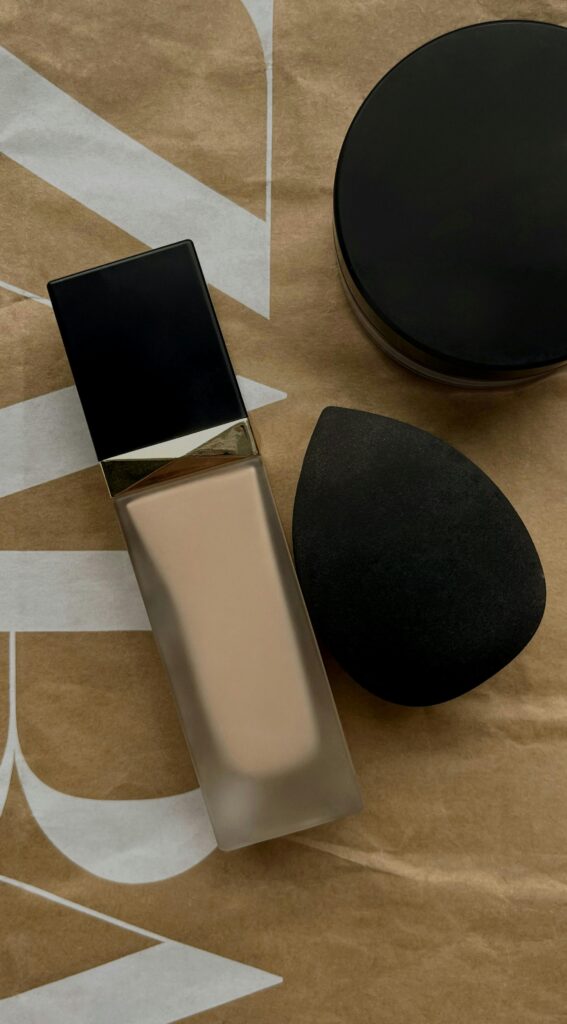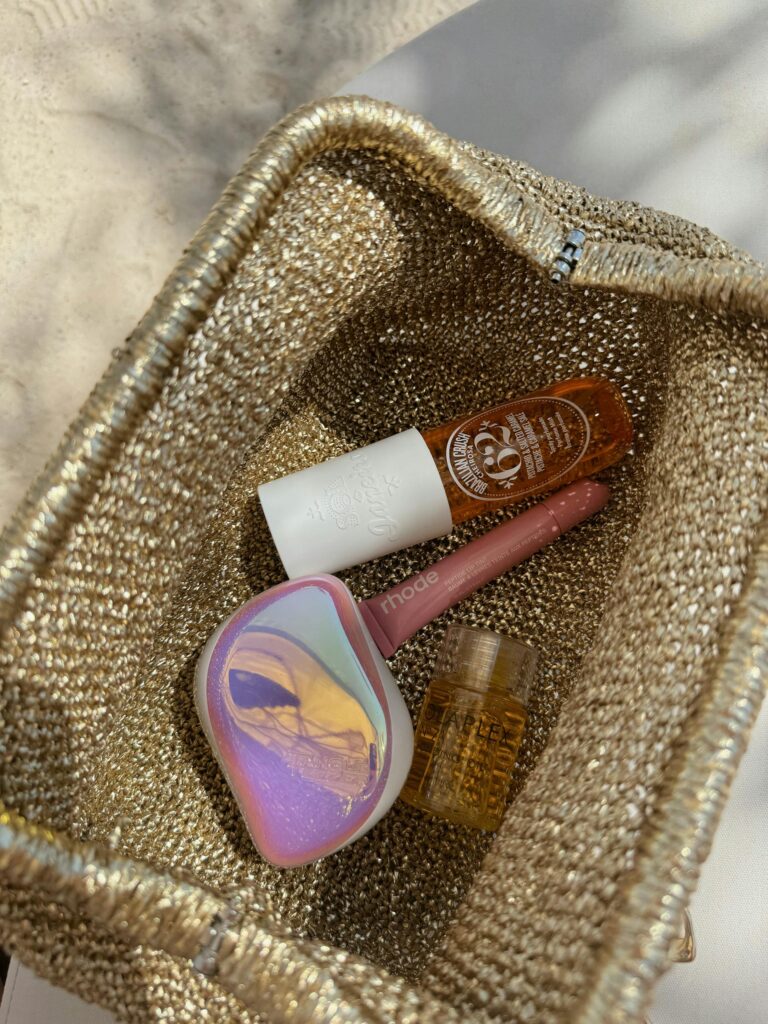The Ultimate Skincare Routine for Oily Skin
The best skincare routine and tips to maintain your oily skin healthy

Introduction
Welcome to the ultimate skincare routine for oily skin! If you’ve been struggling with excess oil, clogged pores, and breakouts, you’re in the right place. Finding the perfect skincare routine for oily skin can be tricky, but with the right products and habits, you can keep your skin balanced, clear, and glowing. In this post, we’ll guide you through every step, from cleansing to moisturizing, and share essential tips that go beyond just skincare products. Whether you’re dealing with shine throughout the day or battling stubborn acne, this comprehensive routine will help you manage oil production and achieve the smooth, healthy complexion you deserve. Let’s get started!
If you want to learn more about skincare, discover which products are right for you, and get the best skin recommendations and tips, click the button below and explore the world of skincare recommendations. Skincare
In Summary
cleansing in am and pm
babes…no make-up!
the best products for oily skin
some random tips
if you have acne
things to incorporate
Cleansing in AM and PM
Cleansing is a key step to maintaining healthy, balanced skin, especially if you have oily skin. However, your approach should differ slightly between morning and evening routines to address your skin’s needs throughout the day. In the morning, it’s not always necessary to cleanse with a full-on cleanser unless your skin feels particularly greasy. Splashing your face with lukewarm water is often enough to remove any sweat or residue from your pillow. This helps preserve your skin’s natural oils and maintain hydration. At night, a proper cleansing routine is essential, especially if you wear makeup or sunscreen. Start with an oil–based cleanser to break down stubborn products and excess sebum, followed by a water–based cleanser to remove any remaining impurities. This double-cleansing method ensures a clean canvas for your nighttime skincare products, helping them absorb better. Always use lukewarm water when cleansing. Hot water can strip your skin of its natural oils, leading to overproduction of sebum, while cold water may not effectively remove dirt or oil.
Babes...no make-up!
We get it—makeup can feel like a lifesaver when dealing with oily skin. But here’s the hard truth: packing on layers of foundation and powder can clog your pores, leading to breakouts and blackheads. Plus, the excess oil on your skin can mix with makeup, leaving you with that dreaded greasy look. And guess what? That shiny, caked-on appearance can actually emphasize fine lines and texture, making you look older than you are.
The solution? Go bare–faced as much as possible to let your skin breathe. If you do wear makeup, opt for non-comedogenic products specifically formulated for oily skin and always double-cleanse at the end of the day. Trust us, your skin will thank you!

The best products for oily skin
When it comes to managing oily skin, the key is using products that balance sebum production without stripping the skin of its natural moisture. Here’s what to look for:
Cleansers: Opt for gentle, gel-based cleansers with ingredients like salicylic acid or tea tree oil. These help control excess oil, unclog pores, and reduce the likelihood of breakouts. Avoid harsh, drying cleansers as they can trigger your skin to produce even more oil.
Toners: Use toners with ingredients like witch hazel or niacinamide to tighten pores and minimize shine. Avoid alcohol-based toners, as they can irritate the skin.
Moisturizers: Don’t skip moisturizer! Lightweight, oil-free, or gel-based options with hyaluronic acid are ideal. They hydrate without clogging pores or adding greasiness.
SPF: Always include a non-comedogenic, matte-finish sunscreen with SPF 30 or higher. Look for formulas that absorb oil and provide UV protection without leaving a shiny residue.
Treatment Products: Incorporate products with active ingredients like retinol, benzoyl peroxide, or AHA/BHA acids. These help regulate sebum, exfoliate dead skin cells, and prevent clogged pores. By focusing on lightweight, balancing products and strategic ingredient combinations, you can effectively manage oily skin while keeping it healthy and glowing.
Some random tips
When caring for oily skin, small habits and thoughtful choices can make a significant difference. For example, when drying your face, it’s important to gently pat it with a clean towel instead of rubbing to avoid irritation. If you struggle with shine throughout the day, blotting papers can be your best friend—easy to carry and effective at soaking up excess oil.
Though it might be tempting, overwashing your face can actually do more harm than good. Stick to cleansing no more than twice a day to avoid stripping your skin, which can lead to even more oil production. Incorporating a clay mask into your weekly routine is another great way to absorb excess oil and detox your skin, while niacinamide can help regulate sebum production and minimize the appearance of pores.
Beyond products, your habits matter too. Try to keep your hands off your face, as this can transfer oil and bacteria that contribute to breakouts. Finally, remember that skincare isn’t just about what you apply to your skin but also about how you nourish your body. Supplements like zinc, omega-3 fatty acids, or probiotics can support skin health from the inside out. Just be sure to do your research and consult with a professional before adding new supplements to your routine.

If you have acne
Dealing with acne on oily skin can be tricky, but the right products and routine can make all the difference. Start with a gentle, non–comedogenic cleanser to remove excess oil without stripping your skin. Look for ingredients like salicylic acid or benzoyl peroxide to target breakouts effectively. Follow up with a lightweight toner to balance your skin and reduce shine.
For your treatment step, use a serum containing niacinamide to calm inflammation and reduce redness, or a product with retinol to unclog pores and boost cell turnover. Always moisturize with an oil-free, gel-based moisturizer to keep your skin hydrated without clogging pores. Finally, sunscreen is non-negotiable! Choose a mattifying SPF 50 formula to protect your skin while controlling oil production.

Things to incorporate
There are certain habits and items you might not have considered that can help keep excess oil production in check. For instance, switching to a silk pillowcase can make a significant difference. Azelaiic acid is another ingredient worth considering for oily skin. Incorporating more protein into your diet at every meal can also support your skin’s health. Protein helps regulate hormones and blood sugar levels, both of which can influence oil production.
Don’t forget the benefits of ginger and turmeric tea, which can help reduce inflammation and promote better digestion. This, in turn, may support your skin’s health by addressing any gut imbalances that could be contributing to oiliness.
Drinking green juices packed with leafy greens can also help by providing antioxidants and hydrating your skin from the inside out, while boosting overall skin health. Finally, Vitamin B5 is essential for oily skin, as it helps regulate sebum production and can reduce the appearance of acne. Supporting your gut health is equally important, as an unhealthy gut can contribute to skin imbalances, including increased oil production.
By paying attention to these often-overlooked factors, you can help keep your oily skin under control while promoting overall skin health.



